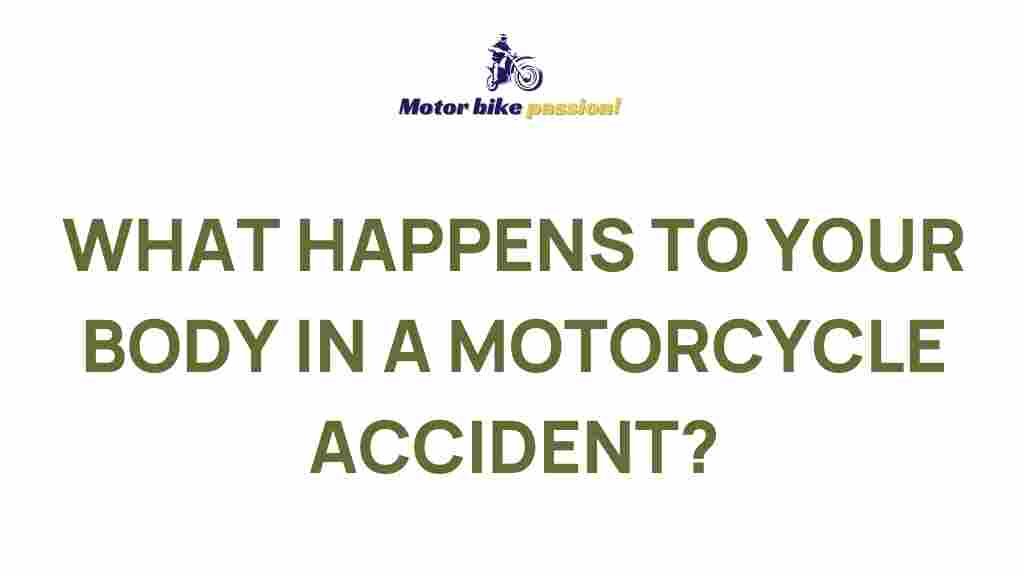Understanding Motorcycle Accidents and Their Hidden Dangers
Motorcycles represent freedom, adventure, and excitement for millions of riders worldwide. However, the thrill of the open road comes with significant risks. *Motorcycle accidents* are far more dangerous than car accidents, as riders have less protection and are more exposed to external hazards. This article explores the hidden dangers of motorcycle accidents, offering essential insights for riders to navigate safely and avoid unnecessary risks.
Why Motorcycle Accidents Are More Dangerous
Unlike cars, motorcycles lack the structural protections of doors, roofs, and airbags. This makes riders more vulnerable to severe injuries, even in low-speed collisions. Some key reasons why motorcycle accidents are more perilous include:
- Minimal physical protection, increasing exposure to direct impacts.
- Smaller vehicle size, making motorcycles harder for other drivers to see.
- Greater susceptibility to road hazards like potholes, gravel, and wet surfaces.
The Hidden Causes Behind Motorcycle Accidents
Motorcycle accidents are not always the result of reckless driving. Many factors contribute to these incidents, including:
- Driver Negligence: Distracted or careless drivers often fail to notice motorcycles in their blind spots.
- Poor Road Conditions: Uneven pavement, debris, and construction zones can destabilize motorcycles.
- Mechanical Failures: Problems like brake failure or tire blowouts can lead to loss of control.
- Weather Hazards: Rain, fog, and wind reduce visibility and traction, increasing the likelihood of accidents.
Steps to Prevent Motorcycle Accidents
While risks cannot be entirely eliminated, riders can adopt proactive measures to reduce the chances of an accident. Follow these steps to stay safe on the road:
- Wear Proper Gear: Always wear a DOT-approved helmet, protective jacket, gloves, and sturdy boots.
- Perform Pre-Ride Inspections: Check your brakes, lights, tires, and oil levels before every ride.
- Follow Traffic Laws: Adhere to speed limits, use turn signals, and avoid weaving between lanes.
- Stay Visible: Use reflective gear and keep your headlights on, even during the day.
- Practice Defensive Riding: Assume other drivers may not see you and maintain a safe following distance.
Common Injuries in Motorcycle Accidents
When motorcycle accidents occur, the injuries sustained are often severe due to the lack of protective barriers. Common injuries include:
- Head Trauma: Even with a helmet, riders can suffer concussions or traumatic brain injuries.
- Fractures: Arms, legs, and collarbones are frequently broken in crashes.
- Road Rash: Sliding across pavement can cause painful abrasions that may require skin grafts.
- Spinal Injuries: Damage to the spine can lead to partial or complete paralysis.
How to Handle a Motorcycle Accident
If you’re involved in a motorcycle accident, knowing how to respond can make a significant difference in your recovery. Here’s what to do:
- Check for Injuries: Assess yourself and others for injuries, and call 911 if needed.
- Move to Safety: If possible, move out of traffic to avoid further danger.
- Document the Scene: Take photos, exchange contact information, and collect witness statements.
- Seek Medical Attention: Even minor injuries should be evaluated by a healthcare professional.
- Contact an Attorney: Consult a personal injury lawyer to understand your rights and seek compensation for damages. Learn more here.
Troubleshooting Motorcycle Safety Challenges
Even experienced riders face challenges on the road. Here are some tips to address common safety concerns:
- Visibility Issues: Install additional lights on your motorcycle and always position yourself where you’re most visible to drivers.
- Weather Hazards: Carry rain gear and avoid riding during extreme weather conditions when possible.
- Fatigue: Take regular breaks during long rides and stay hydrated to maintain focus.
- Unexpected Obstacles: Practice emergency braking and swerving in controlled environments to prepare for sudden hazards.
Resources for Motorcycle Riders
To stay informed and safe, consider joining rider safety programs and communities. Many organizations offer courses that enhance riding skills and knowledge. For example, check out the Motorcycle Safety Foundation for valuable training resources.
Additionally, explore our motorcycle maintenance guide to ensure your bike is always in peak condition.
Conclusion
Motorcycle accidents can be devastating, but understanding the hidden dangers and taking preventive measures can significantly reduce your risks. Always prioritize safety by wearing the right gear, following traffic laws, and staying vigilant on the road. Whether you’re a seasoned rider or new to motorcycles, ongoing education and awareness are your best tools for enjoying the open road safely.
By addressing the challenges of riding and staying prepared for unexpected situations, you can minimize the dangers and fully embrace the freedom that motorcycles offer.
This article is in the category Safe Driving and created by MotorBikePassion Team
